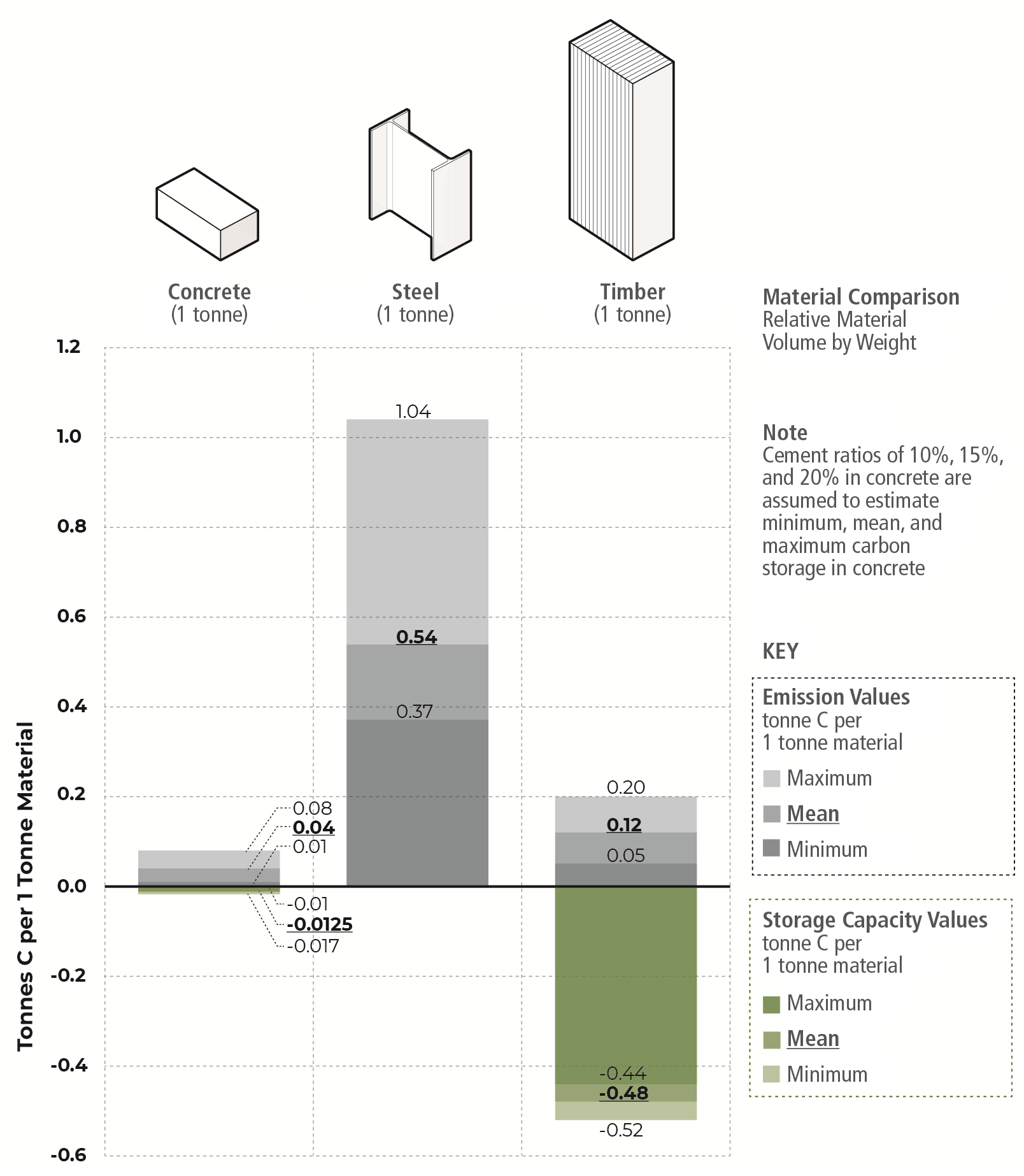Figure 8.17
Figure caption
Figure 8.17: Relative volume of a given weight, its carbon emissions, and carbon storage capacity of primary structural materials comparing one tonne of concrete, steel, and timber. Concrete and steel have substantial embodied carbon emissions with minimal carbon storage capacities, while timber stores a considerable quantity of carbon with a relatively small ratio of carbon emissions-to-material volume. The displayed carbon storage of concrete is the theoretical maximum value, which may be achieved after hundreds of years. Cement ratios of 10%, 15%, and 20% are assumed to estimate minimum, mean, and maximum carbon storage in concrete. Carbon storage of steel is not displayed as it is negligible (0.004 tonne C per tonne of steel). The middle-stacked bars represent the mean carbon emission or mean carbon storage values displayed in bold font and underlined. The darker and lighter coloured stacked bars depict the minimum and maximum values. Grey tones represent carbon emissions and green tones are given for storage capacity values. Construction materials have radically different volume-to-weight ratios, as well as material intensity (see representations of structural columns in the upper panel. These differences should be accounted for in the estimations of their carbon storage and emissions (see also Figure 8.22). Source: adapted with permission from Churkina et al. (2020).
